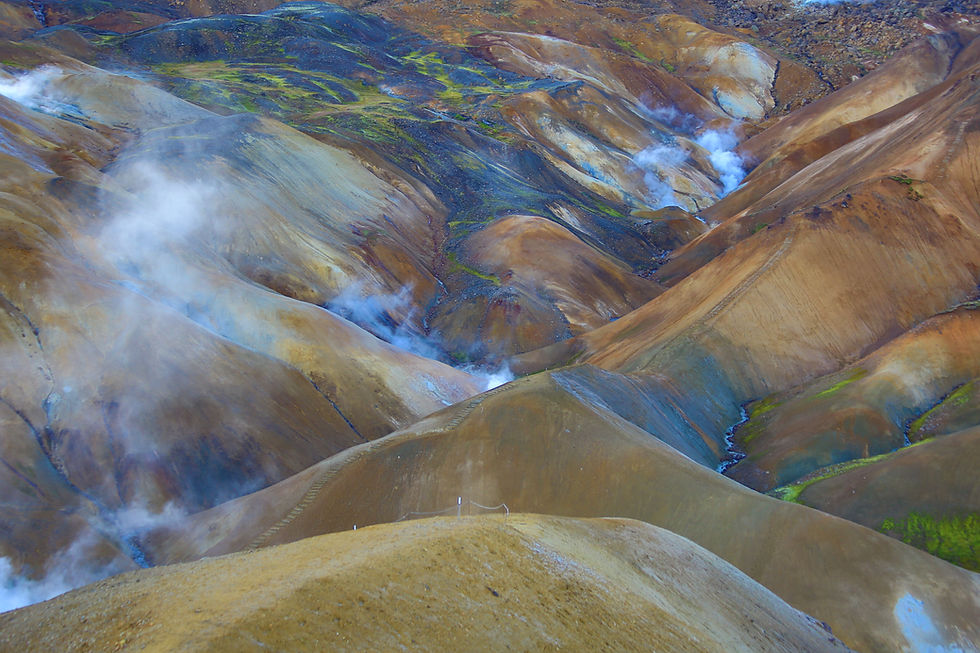Fiordland National Park, South Island, Aotearoa
- Jan 7, 2019
- 3 min read
Updated: Jan 3, 2023
Occupying over 4,868 sq miles in the southwest corner of New Zealand's South Island, it is the largest national park in the country. During the glaciation period, in as early as 2.5 million years till a few thousand years ago, moving ice carved up spectacular u-shaped fiords, resulting in world famous ones like Milford, Doubtful and Dusky Sounds. The majority of its peaks ranges from 3,300' to 5,000', with the highest being Mt. Tutoko at 8,933'. Some of these mountain cliffs are near vertical; punctuated with crystal clear waterfalls created by the melting ice-capped peaks.

The town of Te Anau is the gateway to the Fiordland National Park. Majority of people who visit also use this town as a starting or ending point for trekking the world famous Milford and Kepler Tracks or the lesser known Dusky Track with its 21 3-wire bridge crossings; all of which boast of spectacular scenery and wildlife. Since we only had half a day to spend around Te Anau, we took to the skies on a Robinson R44 which gave us ample time to cover a large swath of the national park, from above Te Anau, across Lake Manapouri, towards Dusky and Doubtful Sound, and back to Te Anau, but not before making two alpine landings - one on the ice-covered peak of Mount Pender and the other on an alpine lake on top of Mount Kidd.

Once we got airlifted, we had a perfect view into the Fiordland National Park. With a strong headwind, we made our way westward at around 90 knots towards Dusky Sound. At the edge of Lake Manapouri we also saw some utility roads and power lines, resembling scar-like features that broke up the monotony of the landscape. Once past the manmade view, we then passed over the true rugged fiordland, and we noticed how remote this area is, with its impassable terrain and very steep cliffs.

In about half an hour into the flight, our pilot landed us on a flat top peak with an unobstructed view into Dusky Sound, the largest sound in the Fiordland National Park. It was here that the famous seafarer Capt. James Cook first encountered the native Maori of New Zealand when he steered his ship into the sound in 1770. He then named it Dusky, reflecting the dark reddish tone of the surrounding area due to low diffused lighting.

I certainly would concur with Captain Cook as the name aptly describes the feeling of the place - bleak, darkish, cold and lifeless. Nevertheless, it is an amazing place to visit and have a first hand glimpse into this far and remote place.
We then got airlifted and continue our flight towards Doubtful Sound, not as big as Dusky but quite imposing as it is the second largest fiord in this area. I was told that Capt. Cook was hesitant upon sailing his ship into this section of the sound as he couldn't confirmed the depth and width of the sound. I guess this was the sole reason he named it Doubtful.

In the next half hour, we had some thrilling moments as the pilot negotiated low flying maneuvers over a few hanging valleys. He followed a stream that cut through a steep gulch, with both sides covered in steep sheer walls. We flew past several drop waterfalls and a particular valley referred to by the locals as Campbell's Kingdom.

Once we flew out of the hanging valley, the pilot found a perfect perch on Mount Kidd to stretch our legs before resuming our flight back to Te Anau. Fiordland is dotted with many tarns and lakes, mostly from the melting ice and rain. Some of these alpine lakes hold the world's freshest water man can ever find. It is too bad that most of it is held at places unreachable by foot.

The flight back was quite fast- as there was a tailwind behind us. We even spotted the world famous Kepler Track and one of it's huts along the way. It is definitely on our bucket list to complete when we return.

This aerial tour of just slightly over 2-hours long will last us a lifetime. It was truly a wonderful experience to see (and touch) firsthand the serenity and the remoteness of this national treasure of New Zealand; which is a part of Te Wāhipounamu (Māori for "the place of greenstone") World Heritage site.





Comments